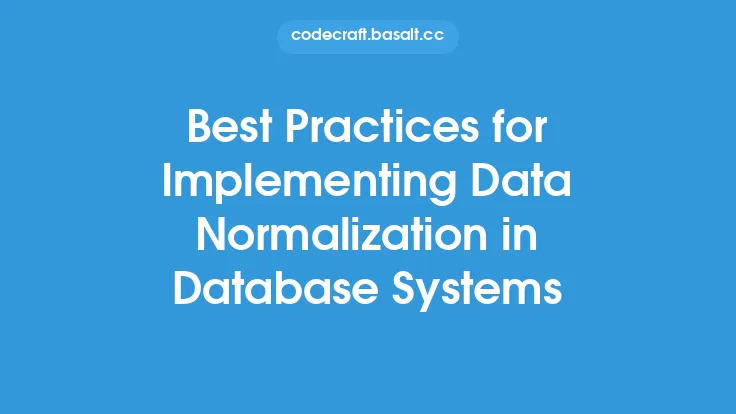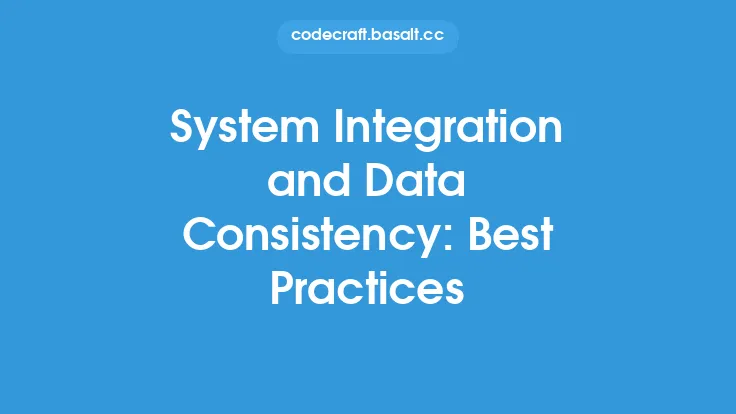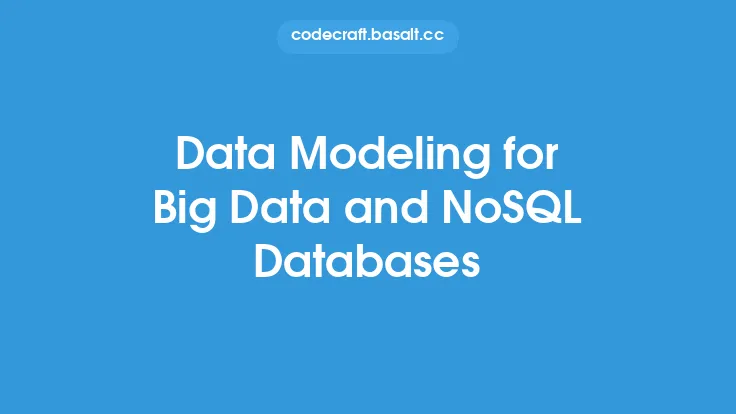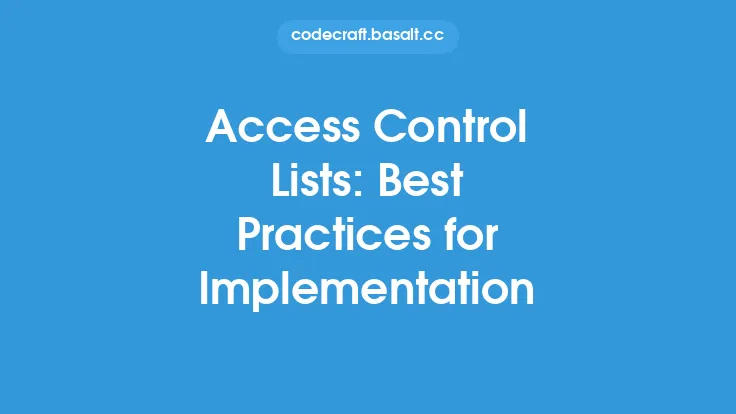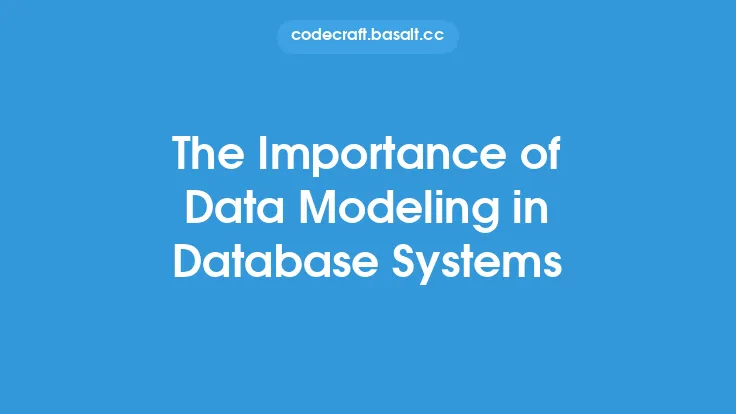Data modeling is a crucial aspect of database systems, as it enables organizations to create a conceptual representation of their data, ensuring that it is accurate, consistent, and scalable. Effective data modeling is essential for maintaining data integrity, which is critical for making informed business decisions, ensuring regulatory compliance, and providing high-quality services to customers. In this article, we will discuss the best practices for data modeling that can help improve data integrity.
Introduction to Data Modeling Best Practices
Data modeling best practices are guidelines that help organizations create a robust, flexible, and maintainable data model. These practices are designed to ensure that the data model is aligned with the organization's business requirements, is scalable, and can adapt to changing business needs. Some of the key best practices for data modeling include defining a clear data strategy, establishing a data governance framework, and using standardized data modeling techniques.
Defining a Clear Data Strategy
A clear data strategy is essential for effective data modeling. It involves defining the organization's data vision, mission, and objectives, as well as identifying the key data entities, attributes, and relationships. A well-defined data strategy helps ensure that the data model is aligned with the organization's business requirements and is scalable to meet future needs. It also helps to establish a common language and understanding of the data across the organization, which is critical for ensuring data integrity.
Establishing a Data Governance Framework
A data governance framework is a set of policies, procedures, and standards that ensure the quality, security, and integrity of an organization's data. It involves defining the roles and responsibilities of data stakeholders, establishing data quality metrics, and implementing data validation and verification processes. A data governance framework helps to ensure that the data model is accurate, complete, and consistent, and that data is handled and managed in a way that maintains its integrity.
Using Standardized Data Modeling Techniques
Standardized data modeling techniques, such as entity-relationship modeling (ERM) and object-role modeling (ORM), provide a structured approach to data modeling. These techniques help to ensure that the data model is consistent, scalable, and maintainable, and that it accurately represents the organization's business requirements. Standardized data modeling techniques also facilitate communication and collaboration among data stakeholders, which is critical for ensuring data integrity.
Normalization and Denormalization
Normalization and denormalization are two important concepts in data modeling that help to ensure data integrity. Normalization involves organizing data into tables to minimize data redundancy and improve data integrity. Denormalization, on the other hand, involves intentionally deviating from normalization rules to improve performance or scalability. A good understanding of normalization and denormalization is essential for creating a robust and scalable data model.
Data Type Selection and Validation
Data type selection and validation are critical aspects of data modeling that help to ensure data integrity. Data types define the format and range of values that can be stored in a column, while data validation ensures that the data entered into a column is accurate and consistent. Choosing the right data type and implementing data validation rules helps to prevent data errors, inconsistencies, and inaccuracies, which can compromise data integrity.
Indexing and Partitioning
Indexing and partitioning are two important techniques that can improve the performance and scalability of a database. Indexing involves creating a data structure that facilitates quick lookup and retrieval of data, while partitioning involves dividing large tables into smaller, more manageable pieces. A good understanding of indexing and partitioning is essential for creating a robust and scalable data model that can support high-performance queries and transactions.
Data Modeling Tools and Techniques
There are several data modeling tools and techniques available that can help improve data integrity. These include data modeling software, such as Entity-Relationship Diagram (ERD) tools, and data modeling methodologies, such as data vault modeling. Data modeling tools and techniques provide a structured approach to data modeling, facilitate communication and collaboration among data stakeholders, and help to ensure that the data model is accurate, complete, and consistent.
Best Practices for Data Model Maintenance
Data model maintenance is an ongoing process that involves regularly reviewing and updating the data model to ensure that it remains accurate, complete, and consistent. Some best practices for data model maintenance include regularly reviewing data quality metrics, updating the data model to reflect changing business requirements, and implementing data validation and verification processes. Regular data model maintenance helps to ensure that the data model remains aligned with the organization's business requirements and that data integrity is maintained.
Conclusion
In conclusion, data modeling is a critical aspect of database systems that requires careful planning, design, and maintenance to ensure data integrity. By following best practices, such as defining a clear data strategy, establishing a data governance framework, and using standardized data modeling techniques, organizations can create a robust, flexible, and maintainable data model that supports their business requirements. Additionally, techniques such as normalization, denormalization, data type selection, and indexing can help to ensure data integrity, while data modeling tools and techniques can facilitate communication and collaboration among data stakeholders. By prioritizing data integrity and following these best practices, organizations can ensure that their data is accurate, complete, and consistent, and that it supports informed business decisions, regulatory compliance, and high-quality services to customers.
